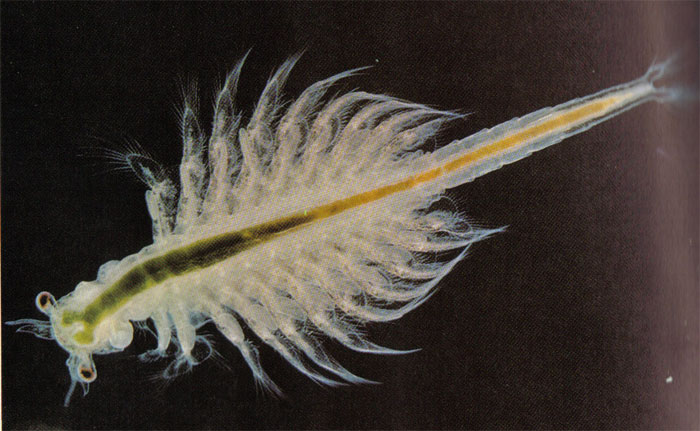Life animals 10,000 years, though
Despite the extremely small size, this creature has the power to knock out all the other opponents on earth to receive the title of the longest living creature on earth.
The animals live incredibly hard
Artemia shrimps , also known as sea monkeys, are very tough creatures, their lifespan can last up to more than 10,000 years.
While dredging the Great Salt Lake in Utah, USA, it was found that an follicle mass of this shrimp was beneath the salt layer at the bottom of the lake. This follicle has not yet hatched.
After bringing in the research, radiography of radiography, scientists discovered that it was more than 10,000 years old. This species specializes in saltwater areas.

This species specializes in saltwater areas.
Called Artemia shrimp, this species is not really shrimp , but they are crustaceans. The size of an Artemia shrimp is only about 15mm. Their favorite habitat is in saltwater pools or lakes.
The first record of the existence of this animal was in 982 in Lake Urmia - a saltwater lake in Northwest Iran. But it was not until 1757 that people officially published pictures and documents about this shrimp.
The main feed of Artemia shrimp is marine algae and plankton. Interestingly, the females do not need help from male shrimp but still can reproduce normally.
No matter how "torture" is still alive
Artemia shrimp are masters of survival ability, however harsh conditions they exist.
In seawater, salt concentration usually only accounts for 3.5% but this shrimp species can survive in puddles of up to 50% salt concentration. In addition, no matter how harsh "torture" measures are taken, they are still inert.

Artemia shrimp species when directly exposed to ultraviolet light or boiled at 105 degrees C or at temperatures close to 0 and still live .
For example, take them to dry, dry on fire, immerse in alcohol, in a vacuum and under pressure at a depth of 6,000 meters on the seabed or even out in space, they still live as usual.
And yet, Artemia shrimps when exposed directly to ultraviolet light or boiled at 105 degrees C or at temperatures near zero, they still exist. If normal creatures fall into the above tests, they will certainly not have a chance to survive.
They also experimented with introducing Artemia shrimp into deep pesticides or immersed in pH solution with acidity so high that they disintegrated human flesh but they still exist.
The secret of longevity of Artemia shrimp
The secret of the "sea monkey" is that they can survive with very little water in the body. For a normal body, water plays an important role, they maintain and regulate body temperature, which helps to nourish cells and vital organs such as protein molecules, sugar and chromosomes. .
When people have only 15% water in the body, we can still survive but for animals, they only survive when there is at least 50% of water in the body.

Artemia shrimp has undergone a long process to be able to have great survival as it is today.
But for small Artemia shrimps, even if the amount of water is only 3%, it is not a problem affecting survival. Because when they are dehydrated, they immediately turn the cells into solid sugar blocks to make sure the cells are not deformed and broken.
These sugar blocks are composed mainly of trihaloza , a special sugar found in many fungi and grasses that help them survive the cold winters.
In addition, Artemia shrimp can "dry" themselves to help prevent health risks due to the amount of water inside, and they are able to recover damaged protein structures.
In terms of evolution, Artemia shrimp has undergone a long process to be able to have great survival as it is today. They have reached an extraordinary limit of endurance that no enemy can touch them with.
The ability to self-dry, turn solid cells into solid sugar or exist in harsh water environment has made Artemia shrimp can live ten thousand years, a respectable figure.
- 'The chickens' have the highest life expectancy in the world
- The life secret of animals
- Animals take human life in the blink of an eye
- Animals appear first on Earth
- Animals also have love life?
- Top animals 'longevity' that you didn't expect
- Mistakes when eating can shorten life
- 10 animals that live the longest in the earth
- Do animals count like people?
- Discovered 3 species of precious animals from the original ... time
- The prospect of extending human life by 16 years
- Warning: Tropical animals are down 70% in 40 years
 Animal 'suffering' after hibernation
Animal 'suffering' after hibernation Why do goats climb well?
Why do goats climb well? Scientists were surprised to see chimpanzees eating turtles
Scientists were surprised to see chimpanzees eating turtles Giant catfish died deadly due to drought in Thailand
Giant catfish died deadly due to drought in Thailand